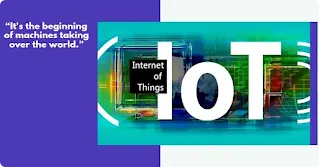10 Ways the Internet of Things (IoT) is
Changing Our Lives
Smart Homes and Home Automation
One of the most visible ways the IoT is changing our lives is through the rise of smart homes and home automation. With the help of connected devices and sensors, homeowners can now control everything from their lighting and temperature to their security systems and appliances with just a few taps on their smartphones. This technology not only makes our lives more convenient, but it can also help us save energy and reduce our carbon footprint.
Wearable Technology and Health Monitoring
Another way the IoT is changing our lives is through wearable technology and health monitoring. With the help of connected devices like smartwatches and fitness trackers, individuals can now monitor their health and fitness levels in real-time. These devices can track everything from heart rate and sleep patterns to steps taken and calories burned. This technology not only helps individuals stay on top of their health and fitness goals, but it can also provide valuable data to healthcare professionals for more personalized and effective treatment plans.
Connected Cars and Transportation
The IoT is also transforming the way we travel with the rise of connected cars and transportation. With the help of sensors and connected devices, cars can now communicate with each other and with the surrounding infrastructure to improve safety, reduce traffic congestion, and enhance the overall driving experience. For example, connected cars can alert drivers to potential hazards on the road, provide real-time traffic updates, and even park themselves. This technology is also paving the way for autonomous vehicles, which have the potential to revolutionize the way we commute and travel.
Smart Cities and Infrastructure
The IoT is also transforming the way we build and manage our cities and infrastructure. With the help of connected devices and sensors, cities can now collect and analyze data in real-time to improve efficiency, reduce costs, and enhance the quality of life for residents. For example, smart streetlights can automatically adjust their brightness based on the time of day and the amount of traffic on the road, reducing energy consumption and improving safety. Smart waste management systems can also optimize garbage collection routes and schedules, reducing costs and minimizing the environmental impact of waste disposal.
Overall, the IoT is helping to create more sustainable, efficient,
and livable cities for everyone.
Industrial IoT and Manufacturing
The Industrial Internet of Things (IIoT) is transforming the manufacturing industry by enabling real-time monitoring and control of production processes. Connected sensors and devices can collect data on everything from machine performance to inventory levels, allowing manufacturers to optimize their operations and reduce downtime. IIoT also enables predictive maintenance, where machines can be serviced before they break down, reducing repair costs and improving efficiency. With IIoT, manufacturers can also create more personalized products and services, as connected devices can gather data on customer preferences and usage patterns. Overall, IIoT is helping manufacturers to improve productivity, reduce costs, and create more innovative products and services.
This blog post was written by Durbar Bagerhat.

Comments